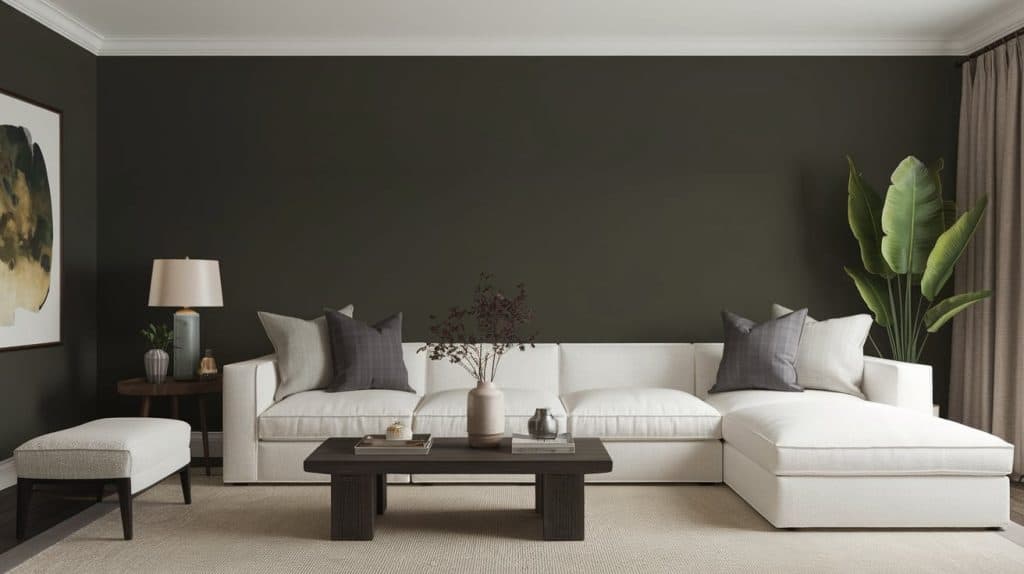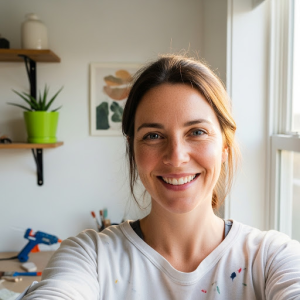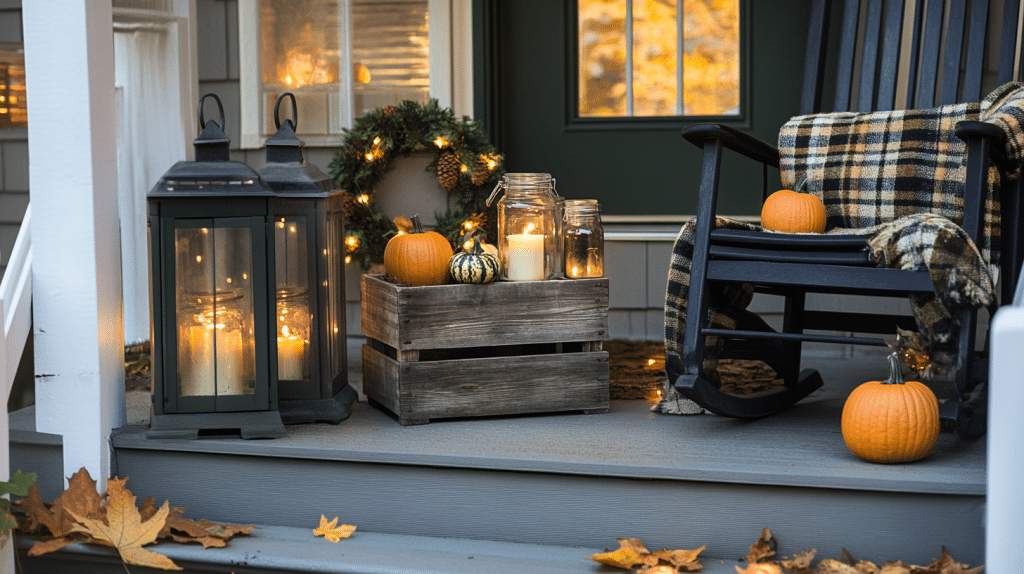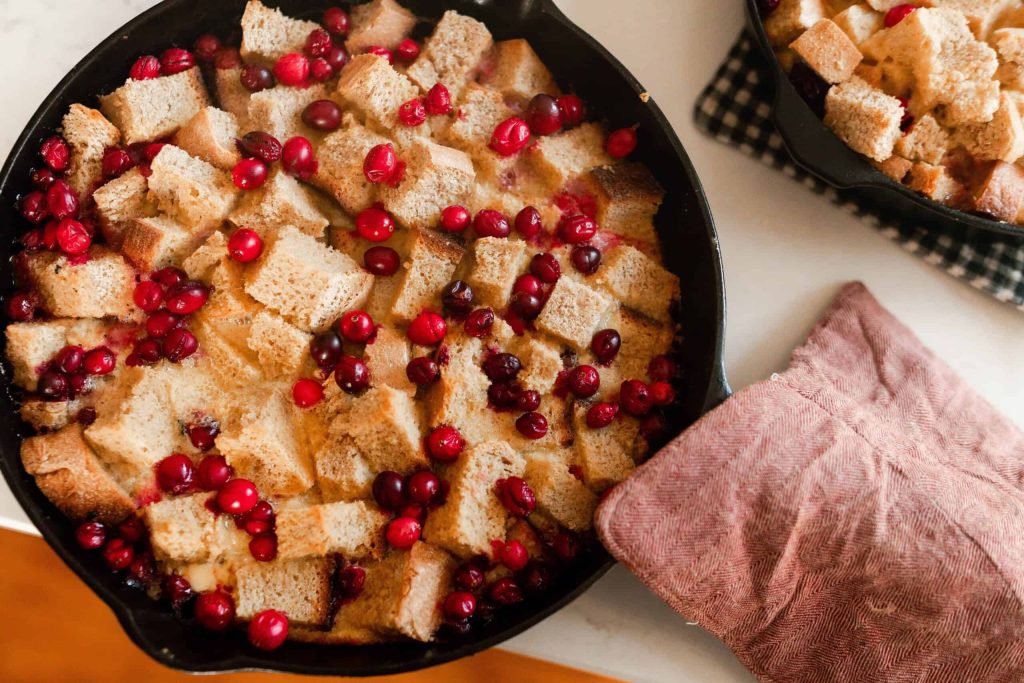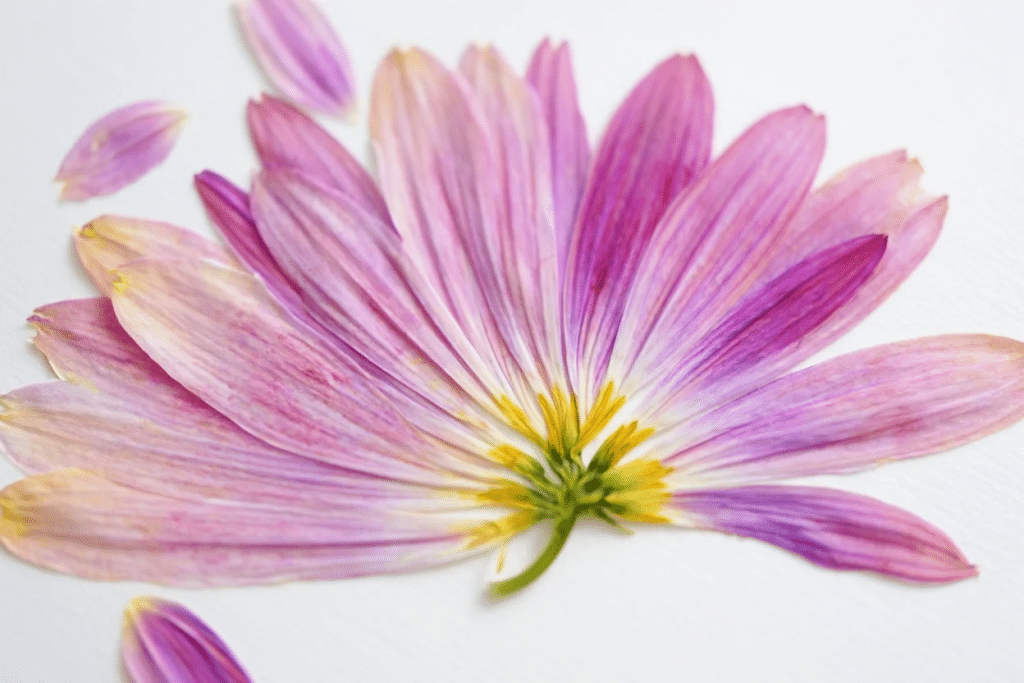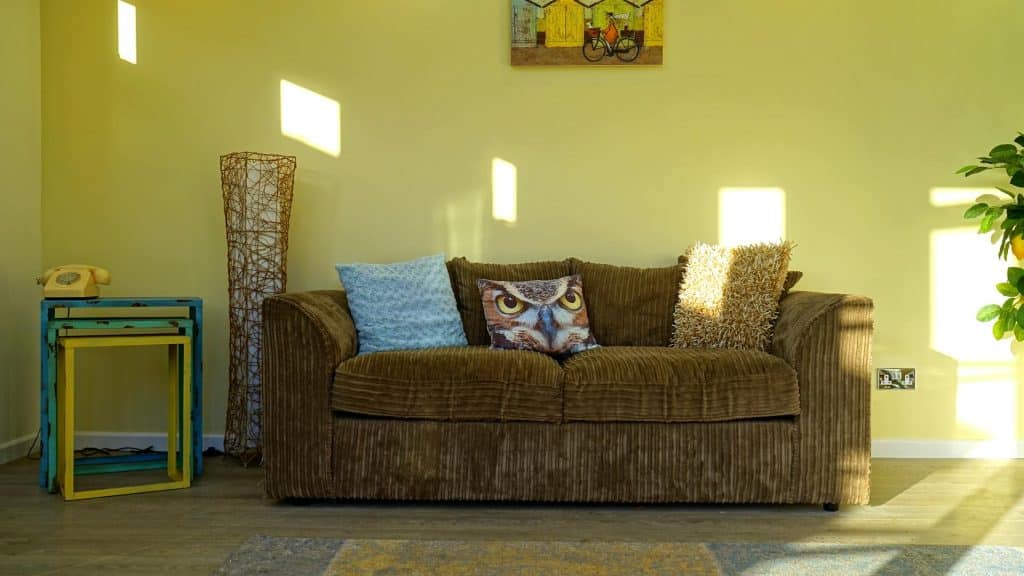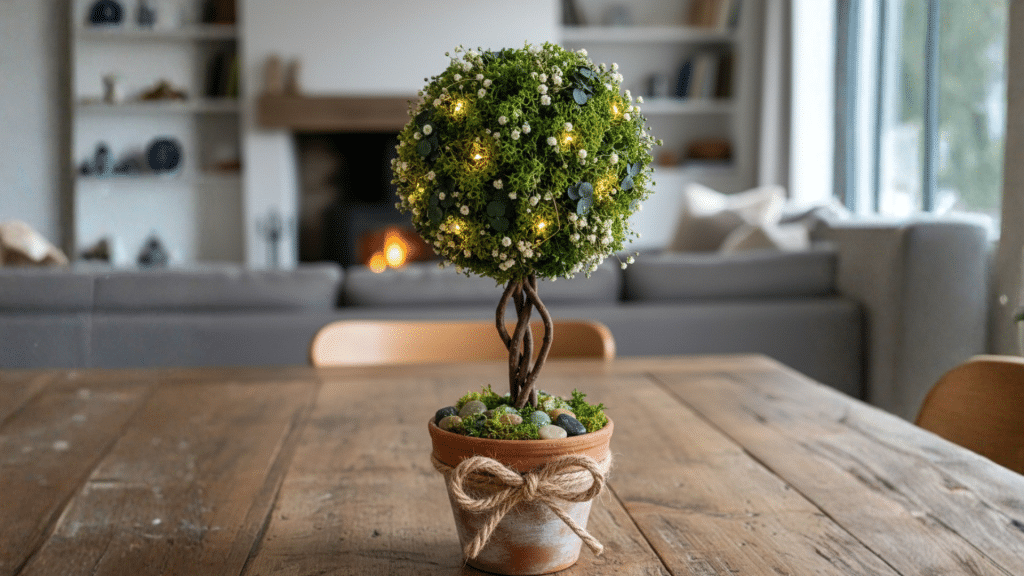Looking for the perfect deep green paint but feeling lost in a sea of options? Many homeowners find color selection truly hard when trying to bring nature indoors.
Those forest-inspired greens can transform spaces into calm sanctuaries, yet picking the wrong shade might leave you with a room that feels too dark or doesn’t match your vision.
Ashwood Moss Benjamin Moore 1484 promises to be that deep graphite-green that brings the outdoors inside.
My experience with this color reveals how it creates warm, grounded spaces while offering flexibility with various design styles.
Let me show you exactly what makes this shade work in real homes and help you decide if it’s right for your walls.
What Color Is Ashwood Moss by Benjamin Moore 1484?
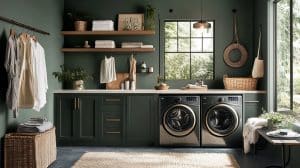
When you first see Ashwood Moss 1484 on a wall, you’ll notice it’s a deep green with gray undertones that creates a sense of calm.
With an LRV of 10.46, this rich color works as a bridge between nature and your indoor space without being too bold.
The gray base in Ashwood Moss tones down the green, making it feel more subtle and mature.
| Property | Value |
|---|---|
| LRV | 10.46 |
| HEX Code | #565851 |
| Undertones | Green with gray influence |
My favorite part about this warm color is how it shifts throughout the day. In morning light, you might catch more of its green quality. By afternoon, the gray undertones become more noticeable. This color has depth that simple bright greens just don’t offer.
Think of Ashwood Moss as the color of pine trees in late evening – it has that same quiet strength and natural appeal that makes a room feel both grounded and connected to the outdoors.
Reasons Ashwood Moss by Benjamin Moore Might be THE Color for You
Choosing Ashwood Moss for your space brings several benefits that make it stand out from other colors. Let me share why this shade might work perfectly for your needs.
1.First, this color creates a warm atmosphere due to its hue of 77° on the HSL color wheel. This warmth shows up most in living rooms and kitchens, where the green-gray tone makes spaces feel more welcoming and less stark compared to cooler colors.
2. Ashwood Moss’s versatility comes from its balanced undertones. With an HSL code of 77, 4%, 33%, it has enough green to feel natural but enough gray to stay neutral. This balance means your furniture and décor don’t need to match a specific color family to work well.
3. Ashwood Moss performs well as both a main color and an accent. Paired with light neutrals like beige or ivory (try Edgecomb Gray Benjamin Moore), its depth creates visual interest without looking too harsh.
4. For larger rooms that feel too open or cold, Ashwood Moss brings them down to a more human scale. The LRV of 10.46% absorbs light rather than reflecting it, which visually reduces the perceived size of oversized spaces.
Best Applications for Ashwood Moss Benjamin Moore
After testing Ashwood Moss in various settings, I’ve found it excels in certain rooms and applications more than others.
Let me share where this deep green-gray truly shines based on my hands-on experience.
Living Room
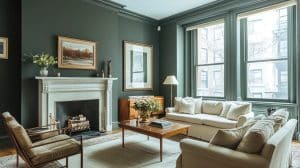
Ashwood Moss transforms living rooms into cozy gathering spots that feel both refined and relaxed. The green-gray tone works as a fantastic backdrop for:
- Natural wood furniture that brings out the organic quality of the color
- Gold or brass accents that pop against the darker background
- Light-colored sofas and chairs that create pleasant contrast
When applied to all walls, this color can make larger rooms feel more intimate. For open concept spaces, try using it on a feature wall behind a fireplace or bookcase to add depth without darkening the entire area.
Bedroom Application
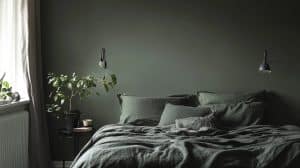
In bedrooms, Benjamin Moore’s Ashwood Moss creates a peaceful retreat that helps with rest and relaxation.
The low LRV of 10.46% means it absorbs light rather than reflecting it, perfect for:
- Creating a sleep-friendly environment
- Forming a sophisticated backdrop for lighter bedding
- Complementing both warm and cool accent colors
Many people find that using this color on all four walls makes a bedroom feel like a cocoon. For a more subtle approach, try painting just the wall behind your headboard as an accent while keeping other walls lighter.
Dining Room
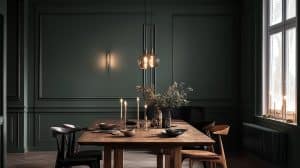
Dining rooms benefit from Ashwood Moss’s formal yet inviting quality. This color works well in these spaces because it:
- Creates an atmosphere that feels special without being too formal
- Provides depth that makes dinner parties feel more intimate
- Looks stunning in both natural and candlelight
Kitchen Islands and Cabinets
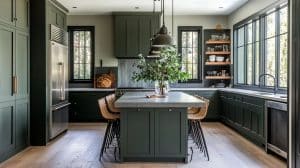
On kitchen islands, Ashwood Moss creates a grounding focal point that anchors the room:
- Pairs beautifully with marble or quartz countertops
- Hides everyday wear and marks better than lighter colors
- Creates visual interest in otherwise all-white kitchens
For cabinets, this color offers a fresh alternative to white or wood tones. Lower cabinets in Ashwood Moss with upper cabinets in white creates balance in the kitchen.
This combination gives you the best of both worlds—the light-reflecting quality of white up top and the rich depth of Ashwood Moss Benjamin Moore below.
Painting the Front Door with Benjamin Moore’s Ashwood Moss
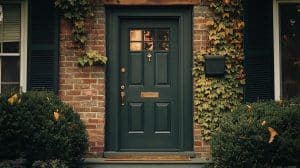
A front door painted in Ashwood Moss makes a quiet yet strong statement that welcomes guests with subtle class.
- Stands out against light-colored exteriors without looking too bold
- Complements brick and stone facades with its natural, earthy quality
- Shows less dirt and wear than brighter colors but still looks fresh
The color works in both sunny and shaded entryways, maintaining its character regardless of light conditions.
Comparing Ashwood Moss with Other Trending Greens
Based on testing several green shades in various lighting conditions, I’ve put together this comparison to help you see the differences.
| Paint Color | LRV | Undertones | Best For | Not Ideal For |
|---|---|---|---|---|
| Ashwood Moss 1484 (Benjamin Moore) | 10.46% | Green with gray | Living rooms, dining rooms, accent walls | Small spaces with limited natural light |
| Shade-Grown SW 6188 (Sherwin Williams) | 11.2% | Olive green with brown | Traditional homes, studies, libraries | Modern minimalist spaces |
| Tuscany Green 2140-20 (Benjamin Moore) | 8.9% | Deep forest green | Masculine spaces, formal rooms | Spaces where you want to feel uplifted |
| Night Mission N370-7 (Behr) | 10.1% | Blue-green with gray | Bedrooms, bathrooms, media rooms | Spaces that need to feel warm |
| Roycroft Bronze Green SW 2846 (Sherwin Williams) | 9.8% | Green with bronze | Historic homes, craftsman style | Contemporary spaces |
The main difference I’ve noticed is that Ashwood Moss has more versatility than some of these other options.
While Tuscany Green feels more formal and Night Mission leans cooler, Ashwood Moss maintains a neutral warmth that works in more settings and with more color schemes.
But who should skip it? If your space already struggles with darkness or you prefer bright, cheerful rooms, this color might not be your best choice. The low LRV means it absorbs rather than reflects light.
The Final Verdict: Is Ashwood Moss Benjamin Moore Worth It?
After testing and living with Ashwood Moss in various spaces and light conditions, I can share my honest thoughts on whether this paint color deserves a spot on your walls.
For most homes, Ashwood Moss proves its value through its balance of character and flexibility.
Bottom line: Ashwood Moss earns its spot among Benjamin Moore’s most useful colors. For those wanting to bring depth and sophistication to their spaces without going too bold, this paint delivers value beyond its price tag.
What do you think about this color? Share your thoughts and experiences in the comments below!


